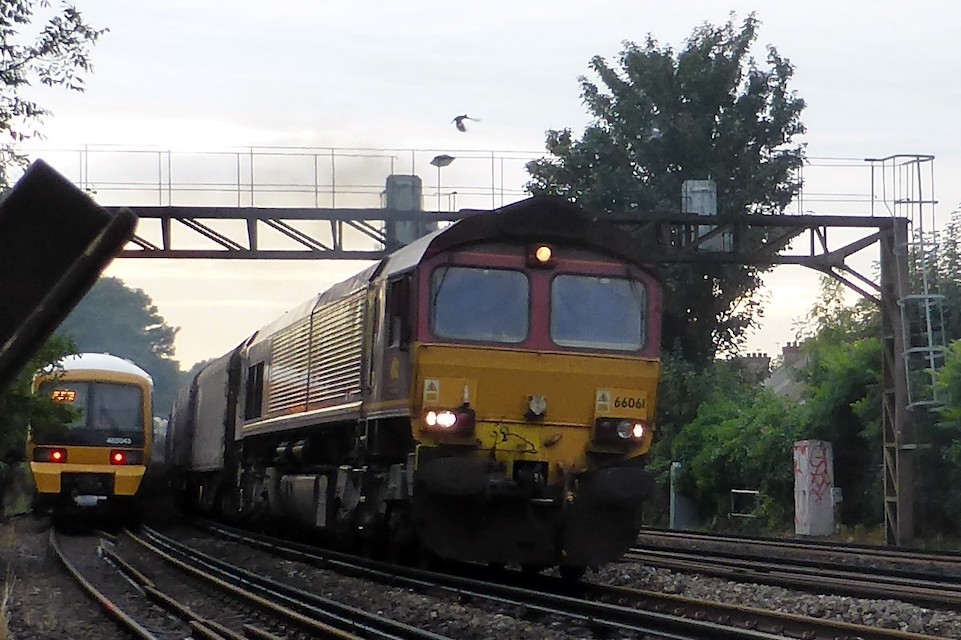The steel works at Port Talbot in South Wales is about to undergo a huge transformation. The decision has been taken to replace the traditional blast furnaces with modern electric arc furnaces. The move will radically alter the production profile of the plant. That development will almost certainly have significant implications for the rail freight operations that currently support the plant.
The very last coking coal shipment has already arrived at the Port Talbot steelworks dock. It tied up on 2 September. With the blast furnaces running down to closure and replacement by electric arc equipment, the writing is also on the wall for rail operations at the vast site. However, that writing may not all be bad news. Rail freight could well be the silver lining to the cloud that hangs over industrial South Wales.
Still one of Britain’s biggest industrial sites
Port Talbot, between Cardiff and Swansea, is a name synonymous with steel production. The vast complex has been at the heart of the industry and the heart of the community for over a century. It is an icon of British industry and remains an integral part of the South Wales economy. It is the larger of the two integrated steel works remaining in Britain (the other is at Scunthorpe in Lincolnshire on the East Coast of England).

Industrial production of steel has been underway at the site since the late nineteenth century. The steelworks has developed over the intervening century and a quarter. The railway infrastructure has grown along with it to support one of Britain’s biggest industrial sites. Now, however, the nature of steel production is about to radically change. Electric arcs can only recycle steel, not smelt iron ore. With the works effectively becoming a steel recycling plant, we can expect to see the delivery of raw materials for smelting cease. In their place will be a huge growth in scrap steel shipments, offsetting that lost traffic.
Rail carriers in dialogue with steel owners
All the traffic for the huge street works is handled by DB Cargo UK, which has monopolised contracts with the owners, Tata Steel, in recent years. “We are in continuous dialogue with Tata Steel’s senior management team,” DB Cargo UK’s Richard Sears told RailFreight.com. “In April this year, we entered into a new, three-year contract and did so in the full knowledge that the company was seeking to transition to a new, more sustainable green business.”

That assurance of continued business is good news for DB Cargo UK, even if it may come as little solace to the several thousand steel workers who face redundancy. Almost 3,000 have, reportedly, already taken a financial package from Tata Steel, and many may not even remain in Port Talbot to see the arc furnaces take over.
Diversified operations at Margam
There will be a radical change of lifestyle for many former workers inside the steel complex. As radical as the even greater number who worked in the many coal mines for which the region is synonymous. It’s not the first time South Wales has faced industrial upheaval. Nor is it the first upheaval for the region’s rail freight industry. “We are inevitably having to make some changes to our day-to-day operations as Tata implements the phased closure of its two blast furnaces,” explained Richard Sears. Nevertheless, unlike the demise of coal mining, there are alternatives available this time around. “There will also be opportunities for our operational and engineering teams when the company commissions its new electric arc furnace facilities,” he said.

The extensive rail network within the Port Talbot works will likely remain active. The only practical way of moving molten steel, regardless of how it is derived, is by the specialised rail transport within the plant. Furthermore, semi-finished and finished steel products are also exported from Port Talbot and elsewhere by rail. These include rolled steel for other plants that manufacture finished products, such as tin-plated cans for food. Traffic is routed via a railway yard at nearby Margam. Although the yard was developed to serve the steelworks, its use has diversified into servicing the rail freight needs of most of South Wales. That diversity should see the yard secure in its future.
Hang up the protective gear one last time
The loads will change, but there will still be plenty of work for rail freight to answer after the blast furnaces go cold. “We do not foresee any reduction in overall volumes as a result,” says Richard Sears. “There will still be a huge demand in South Wales to deliver Tata’s volumes, whether this be scrap metal for the new electric arc furnaces, imported rolling slab, or the transportation of finished products to its downstream facilities.”
The closure of the blast furnaces has been a hugely controversial move, bringing to an end traditional virgin steel making in South Wales. The switch to arc furnace production is expensive, and the UK government has contributed half a billion pounds to the costs and associated regeneration in the region, including freeport status. Several thousand former steel workers will be looking for new employment. Many will take the opportunity to hang up their protective gear for the last time. Perhaps even a few will take a break, and take the time to watch the new trains roll by, heralding the new era at Port Talbot.